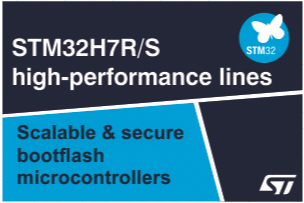How to Determine Which Sensing Technology Fits Your Application
Successful magnetic circuits are built upon proper planning and design principles. Experienced design engineers take a holistic approach to the design process by considering the full magnetic circuit. Open communication between the original equipment manufacturer (OEM) team and the customer helps the engineer anticipate the unique parameters and requirements of the project and tailor the design accordingly.
Time-consuming design challenges result when the OEM team ignores the placement of the sensor until the main system design is nearly finished. The poorly planned design will likely have unique sensor design requirements that cannot be satisfied by a standard sensor package. For instance, the mechanical design footprint may be too large for the available space. Or the electrical load may not allow for a standard sensing element without extra circuitry. If an off-the-shelf sensor is unable to meet the unique design requirements, then a custom sensor will be necessary. Even when best practices in design are applied, harsh environmental conditions may make a custom sensor the only choice for the application.
Reed and Hall effect sensors, which are commonly used in automotive and consumer appliance applications, allow for highly reliable circuit development. Though the sensors are simple in design, they can be modified to fit environments with unique requirements for power, accuracy, stability and reliability. This article will review the differences in output signal characteristics of reed switches and the various Hall effect sensor output options available to design engineers. It will also explain how engineers can select the best sensor for their application.
Digital Sensors Offer High Reliability
Most customers require digital output for their magnetic sensing applications because they want to verify that an object is in its proper position. The following digital sensors deliver exceptional reliability for custom magnetic sensing applications.
Reed Switch
Definition: A reed switch is an electrical switch that does not require power to operate. The contacts are hermetically sealed within a glass tube with precious metal contact material.

Benefits: The switch is highly reliable because it is unaffected by moisture or other environmental factors. Therefore, the contacts will not oxidize and will continue operating for millions of cycles with logic-level loads.
Applications: Reed switches are very popular for battery-powered applications. The switches are used in automotive safety products, such as seatbelt buckle clamping/closure detection sensors and crash sensors for collision detection. Because reed sensors can switch AC or DC loads, they are a popular choice for digital on/off applications, such as door closure detection for the security and household appliance markets.
A refrigerator door uses a reed switch for door closure detection. The magnet is mounted to the door, and the reed sensor is attached to the fixed frame hidden behind the external wall of the refrigerator. When the door is open, the magnetic field cannot be sensed by the reed sensor, causing the LED bulb to turn on. When the door closes, the sensor detects the proper magnetic field and the LED turns off. In this application, a microcontroller within the appliance obtains the signal from the reed sensor and then the control unit activates or deactivates the LED.

Digital Hall Effect Sensor
Definition: The semiconductor-based digital Hall effect sensor varies the output voltage relative to a change in the magnetic field. Without using any moving parts, the sensors provide a digital on/off output signal that corresponds to a change in the magnetic field. The Hall effect unit is limited to applications with low DC voltage and current. Unlike a reed switch, a Hall effect device contains active circuitry, so it draws a small amount of current at all times.

Benefits: Digital Hall effect sensors offer high reliability and can be programmed to activate at a given magnetic field tolerance for precise sensing requirements.
Applications: The sensors are very popular for high-speed sensing applications such as washing machines. In this application, a rotating 16-pole ring magnet activates the Hall effect chip with each passing red (north pole) segment and deactivates it with each passing white (south pole) segment, resulting in a very accurate speed signal. Digital Hall effect sensors are especially useful in automotive safety applications such as seatbelt buckle clamping detection and transmission gear tooth speed sensing.

Analog/Ratiometric Sensors Provide Increased Stability and Accuracy
Analog sensing applications allow the end user to obtain instantaneous feedback on the magnet’s position. The analog Hall effect sensor has a high-accuracy, high-resolution ratiometric output signal.
Previously, analog Hall effect sensors measured the flux density of the magnets and were greatly influenced by the temperature value of the application. Since analog Hall effect technology has advanced in recent years, the Hall effect chip now measures the angle of the flux field instead of the traditional amplitude, making it much less sensitive to temperature changes. The improvement allows the sensor to deliver a more stable analog output across a large temperature range.
Consider two types of Hall effect sensors that can be selected for custom analog sensing applications:
Rotary Hall Effect Sensor
Definition: The semiconductor-based rotary Hall effect sensor varies the output voltage relative to a change in the magnetic field. The sensor offers two output options: analog or pulse-width modulation (PWM). The device is programmable so that the engineer can associate a specific output voltage or PWM to a precise degree of rotation. Multiple programming points are available up to 360 degrees of rotation. Each programming point represents a voltage or PWM output value that corresponds to a given angle of the magnetic field. This results in a ratiometric output signal relative to the degree of rotation.
Benefits: Unlike a mechanical rotary or resistive film rotary device, the rotary Hall effect sensor does not experience mechanical wear or changing resistance values. In addition, it is very stable over normal operating temperatures up to +105° Units are accurate from 0–360 degrees rotation with 0.5 V–4.5 VDC output or 10–90% duty cycle for PWM.
Applications: Rotary Hall effect sensors are becoming very popular for replacing the resistive film or potentiometer mechanical devices. They are used in automotive and off-highway applications, such as detecting the EGR valve position on engines. The sensors may also be used for detecting the dial position in appliance and white goods applications.

Linear Hall Effect Sensor
Definition: Linear Hall effect sensors are similar to the rotary Hall effect sensors except that they measure the linear movement of a magnetic field rather than the rotation. The Hall effect sensor is programmable for a set output voltage that is ratiometric for a given travel distance. The output options are the same as the rotary Hall effect. The sensor measures the linear movement and relative flux angle of a magnetic actuator up to 30 millimeters travel distance with a single Hall effect chip. This results in a ratiometric output signal relative to the precise movement of the sensor.
Benefits: The sensor and actuator can be placed in their final mounting area within the application, which would now include all magnetic influences from the nearby surroundings, prior to programming the output voltage or PWM value to correspond to the relative magnetic field value of the actuation magnet. The engineer can then optimize the application’s output, since any shunting, mechanical tolerances or stack-up tolerances of the magnetic field will be included within the programming environment.
Applications: Linear Hall effect sensors are often used as level sensors for monitoring fluid levels in appliances such as dishwashers. In this application, the sensor detects the location of the moving float, which has a magnet attached to it. As the float position raises or lowers with the relative fluid level, the analog Hall effect sensor, located within the stationary sensor, detects the residual flux angle change within the moving float. The flux angle changes as the magnet/float moves up or down, translating to a relative voltage output signal. This output is a ratiometric value that correlates to the instantaneous fluid level at all times. Linear sensors are also beneficial in more complex designs such as automotive transmission gear shifting.
Using Knowledge and Creativity to Design a Custom Sensing Solution
The following example shows the unique requirements and challenges involved in mounting a position sensor in an outdoor environment. Plastic material design requirements can be very complex when considering that the sensor is exposed to a wide range of temperatures, rain, snow and sunlight. In addition, the sensing solution must continue operating reliably under a 10- or 15-year warranty.
The Problem
Initially, the customer wanted a normally closed standard reed sensor that could be mounted in an outdoor environment located in any type of climate. After extensive communication between the customer and the design engineering teams, it was determined that a standard reed sensor would be unable to address the harsh outdoor conditions.
The Requirements
The customer needed a custom sensing solution that would address the following requirements:
- The unit had to include a normally closed contact reed switch, be sealed against dripping water and meet the IP65 rating.
- The wire harness would be exposed to sunlight and had to be outdoor rated for ultraviolet (UV) light.
- Although the temperature range seemed benign at -40°C to +105°C, it included humidity cycling and a special setup for a water drip test under thermal cycling conditions.
- The customer required a very tight activation distance tolerance over the full temperature range of the application.
The Solution
Following additional discussions and sample evaluations, the engineering team developed a robust, custom design that incorporated the following elements:
- The team used a UV-rated cable for connecting two of the reed sensors into a Y joint. The joint was tied into a harness and an associated connector that was connected to the customer control box.
- To meet the IP65 rating, each reed sensor had a sealed interface connected to the cable, special potting material, an over-molded Y joint and an overmolded connector leading to the harness wire of the control box. In addition, the team performed a special cleaning process to the harness and capsules so that the overmolding of the connector and potting material within the sensors could meet the challenging IP65 rating requirements and withstand the water drip test during the thermal cycling test.
- The activation distance tolerance and special alignment for the sensor and actuator required the team to use custom injection-molded capsules for both the sensors and actuators.
- The reed switch was chosen over other technology options for several reasons:
- It was a normally closed switch. Other sensing technologies such as Hall effect or magnetoresistive (MR) would require current consumption at all times, even in nonactivate mode. The customer needed a simple switch that would not require mechanical operation in its challenging environment.
- Reed switches are unaffected by dirt and moisture because of their hermetically sealed contacts. Also, they are known for performing well in tough climates such as those found in automobile safety applications.
Conclusion
When designing a system that incorporates noncontact sensing such as reed switches or Hall effect sensors, it is imperative that the design engineer have as much knowledge as possible regarding the entire system before the design process begins. Sometimes unique design requirements can only be addressed with a custom sensing solution.
Digital applications can meet the highest reliability standards by employing custom Hall effect sensors or reed switches, while stability and accuracy in custom analog applications are best achieved by utilizing rotary and linear Hall effect sensors. In applications where custom sensor design is required, creativity is helpful in combining existing sensing technology with ancillary features that will allow for designing a robust sensor that is highly reliable.
About the Author

Gwenn Gmeinder is the North American Business Development Manager for sensor products within the Electronic Business Unit at Littelfuse. For over 30 years, he has worked with sensor technologies at several companies. Gmeinder joined Hamlin in 1978 as a product design engineer and began managing its global business development in 2007. He has held his current position within the company (now part of Littelfuse) since June 2013. Gmeinder earned his BS in industrial technology from the University of Wisconsin-Stout. He can be reached at GGmeinder@Littelfuse.com.








